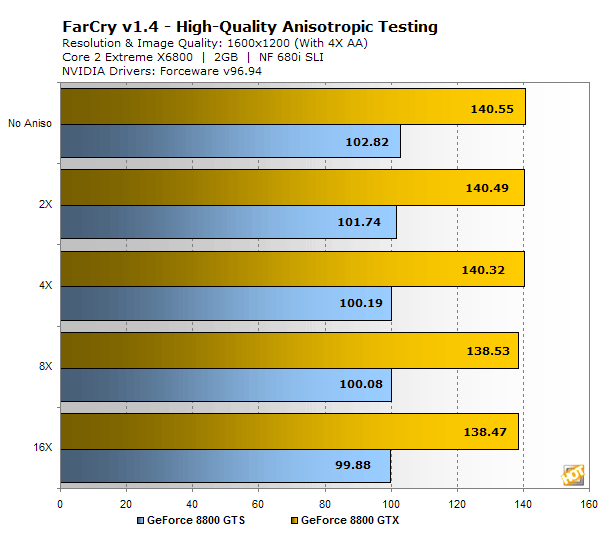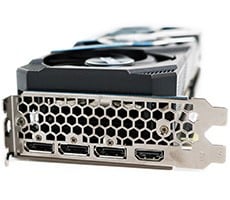Anisotropic Filtering Quality and Performance
NVIDIA has claimed that the G80 at the heart of the GeForce 8800 GTS and GTX offers unsurpassed image quality. And so, prior to benchmarking the new cards, we spent some time analyzing the 8800 GTX's in-game image quality versus a Radeon X1950 XTX and NVIDIA's previous flagship GeForce 7900 GTX. First, we used Half Life 2: Episode 1's "background_01a" map to get a feel for how each card's anisotropic filtering algorithms affected the scene and we also fired up the D3D AF Tester to get a clear visual representation of the angular dependency of each architecture.
|
|
|
As you can see in the screen-shots above, as the level of anisotropic filtering is increased, the clarity and sharpness of the ground texture is enhanced. If we compare the quality of the images produced with each card, it's difficult the pick one that is clearly superior but there are definitely more subtle detail in the captures grabbed with the GeForce 8800 GTX. If you focus your attention on the cracks in the ground in the distance, you'll be able to pick up some of the differences.
The images captured with D3D AF Tester also show the GeForce 8800 GTX's strengths. The 8800 GTX has almost no angular dependency and produces smooth transitions, in an almost circular pattern. The Radeon X1950 XTX also does a great job with anisotropic filtering, but if you open the 16X aniso shots taken with the D3D Tester side-by-side you'll see the 8800 produces the superior pattern.
What the above screen-shots don't show is that the texture shimmering issue that's plagued the G70 is completely gone. The G80's new filtering capabilities have eliminated the texture shimmering present with older architectures, which actually made gaming much easier on the eyes.

To get an idea as to how increasing the level of anisotropic filtering in a game affected performance, we cycled through every available setting using our custom FarCry benchmark with the GeForce 8800 GTX and 8800 GTS. As the results show, anisotropic filtering is almost "free" on the G80. As the level of anisotropic filtering was increased, performance dropped off only slightly with either card.




































